SUV with over five meters in length shares electric architecture and platform with the EV6, capable of having 6 or 7 seats, and rear-wheel drive (204 hp) or all-wheel drive (385 hp)
Kia regularly renews its commitment to the electrification program undertaken during the early years of the 2010s. The plan is gaining speed to ensure that the South Korean manufacturer also meets the goal of selling 1.6 million electric vehicles by 2030 (37% of the estimated production for that year).
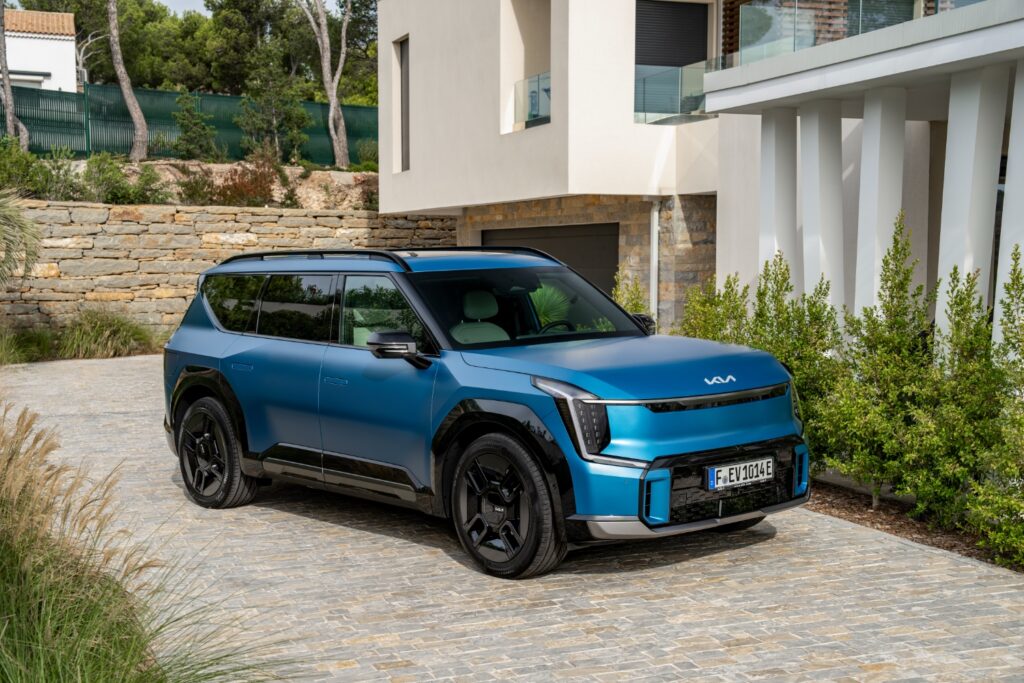
Now, the novelty is the EV9, an SUV that shares the 800 Volt electric architecture and the E-GMP platform, which the EV6 debuted in 2021 – but it has the particularity of positioning itself at the top of the range, as an alternative to proposals such as the Audi Q8 e-tron, the BMW iX, the Mercedes EQE SUV, the Volvo EX90, or the Tesla Model X. The undertaking is ambitious, but Kia presents us with the EV9 not with the ambition of selling it massively, but as an important tool for promoting the image and brand value with remarkable growth in the European market (416,715 units sold in 2020, 502,677 in 2021, 542,423 in 2022). This trend continued in the first quarter of 2023 (148,571 units), as did the registrations of electrified products, which account for an increasingly larger share (currently, already above 30% – with 31.0%, compared to the 27.8% recorded last year).

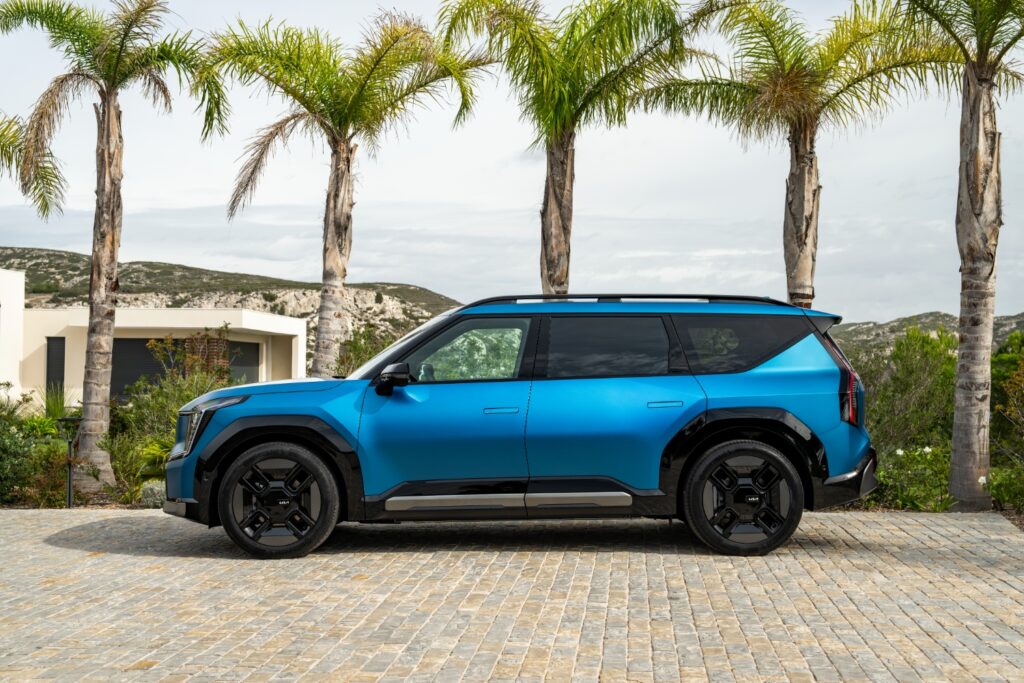
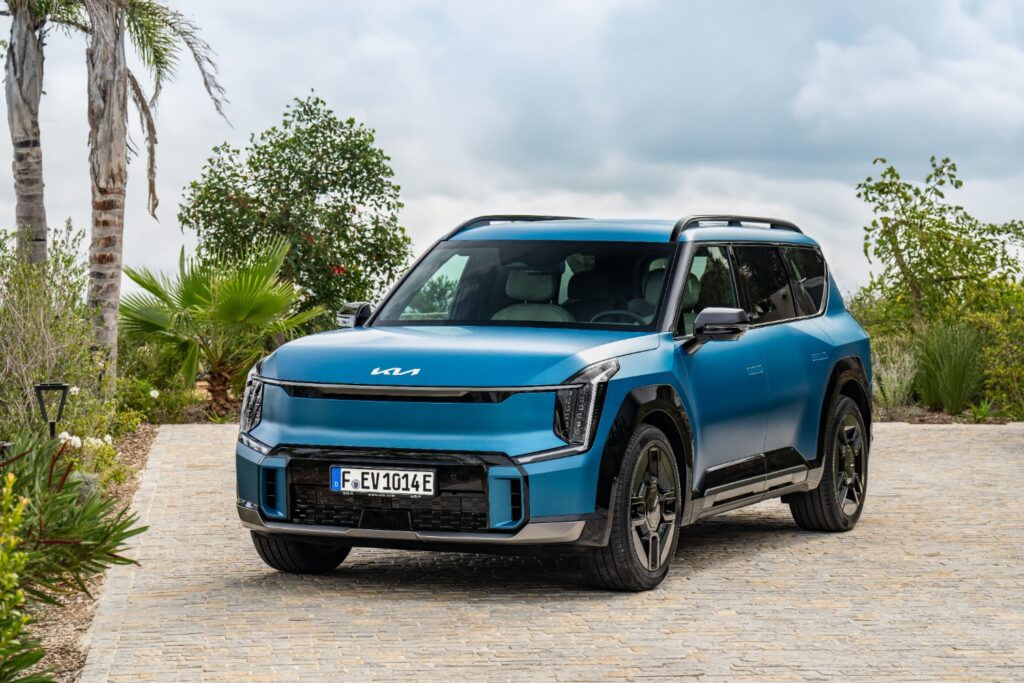
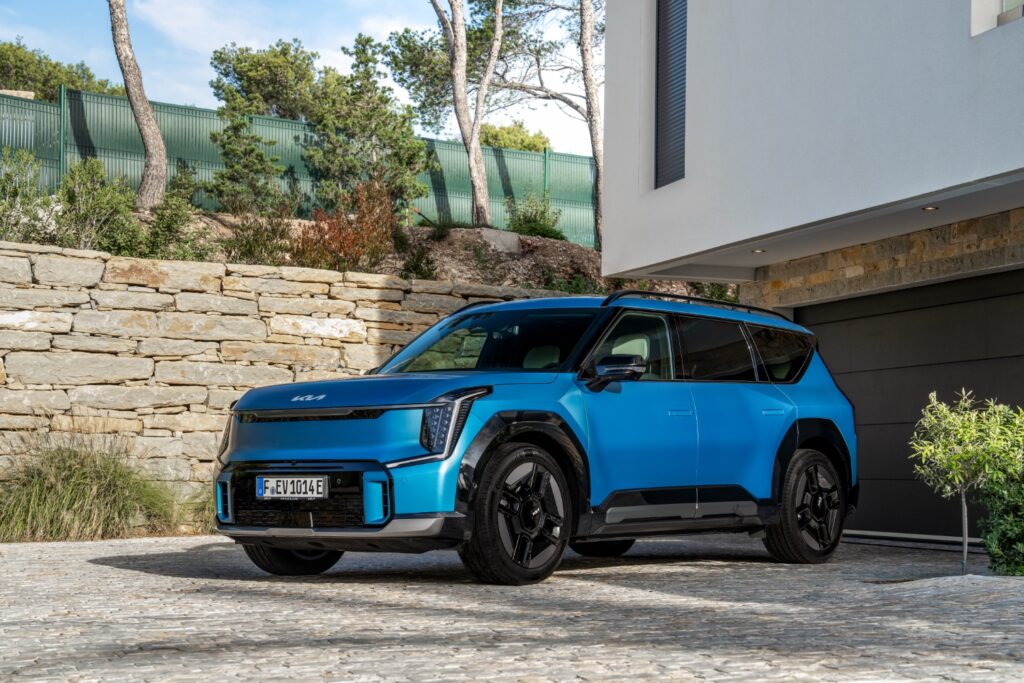
The EV6 was Kia’s first electric vehicle based on a dedicated platform, and this EV9 is the first Sport Utility Vehicle (SUV) with the same technical and technological package. The new flagship measures 5.010 m in length and 3.100 m in wheelbase, has a lithium-ion battery with 99.8 kWh capacity, and has rear-wheel drive or four-wheel drive. In the first configuration, the motor has 203 hp/350 Nm, a maximum range of 563 km between charges (due to the 800 Volt technology, an additional 239 km in 15 minutes, with access to ultra-fast charging stations). In the second configuration, a motor of 192 hp per axle, combined performance of 384 hp/700 Nm, and a range of 505 km. The SUV accelerates from 0-100 km/h in 6.0 seconds (5.3 seconds in the GT-Line version) and has a maximum limited speed of 200 km/h.
The Kia EV9, originally revealed at the New York Auto Show in April, features a digitized dashboard (Triple Panoramic Display with three monitors – 12.3” for instrumentation, 5.3” for climate control, and 12.3” for infotainment system, which responds to both touch commands and voice instructions) and Level 3 autonomous driving (Highway Driving Pilot among many available technologies).
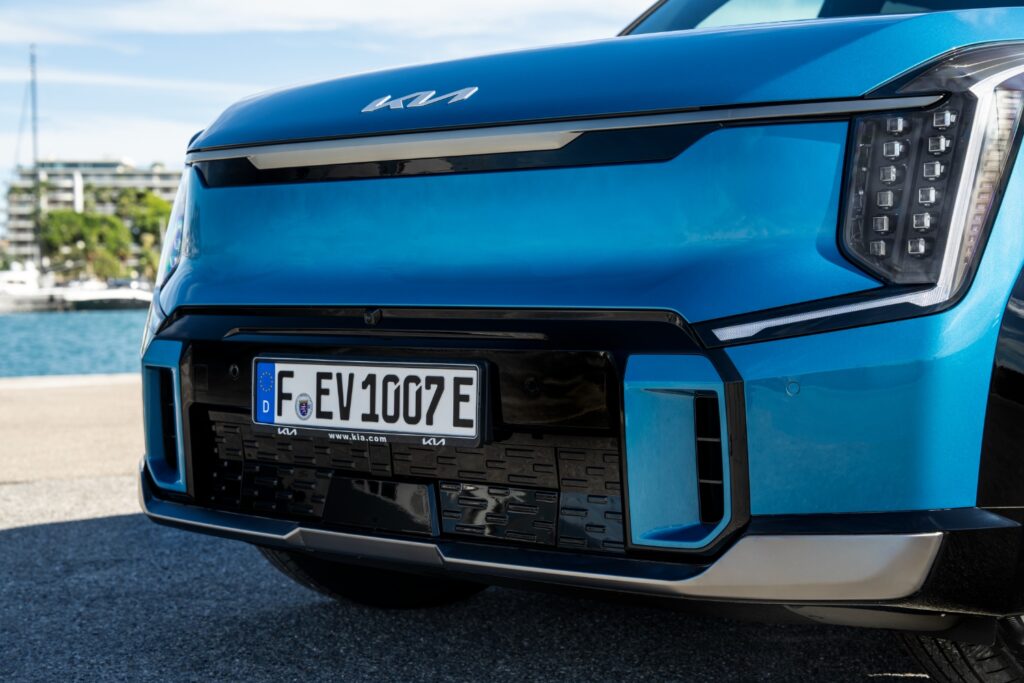

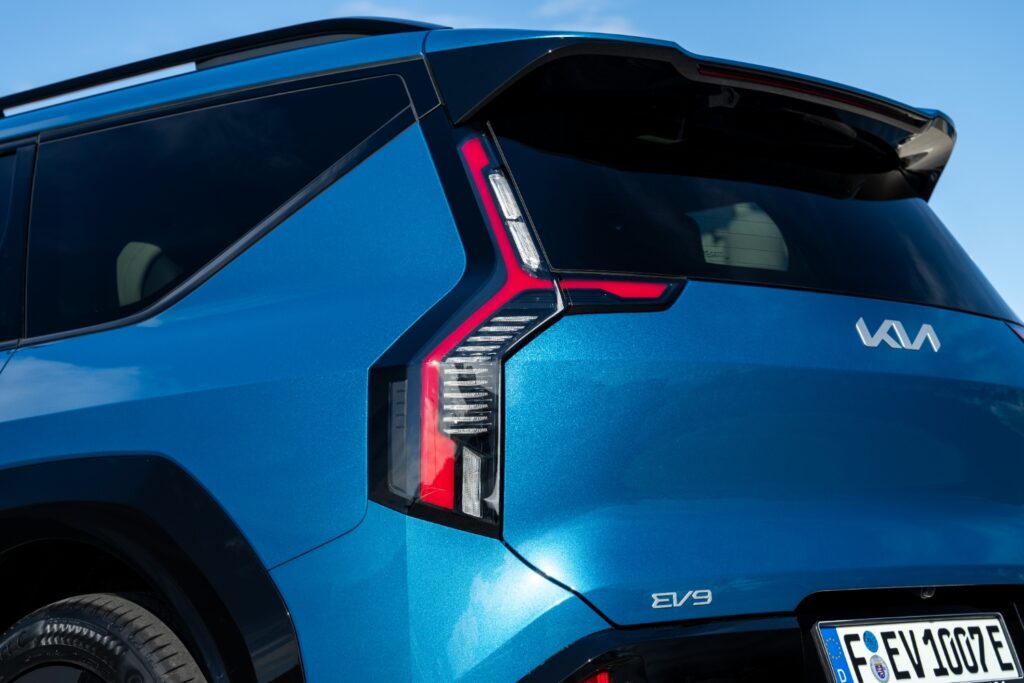
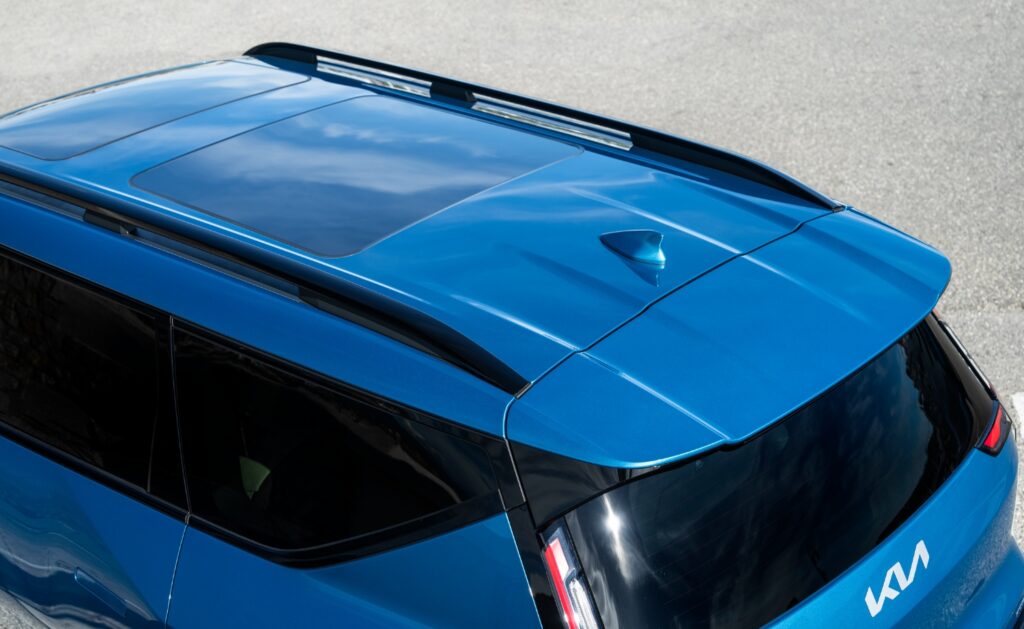
The range is very simplified, with the rear-wheel drive version only available in combination with the First Edition equipment level, for €77,500 (€60,990+VAT for companies, which deduct the tax at the maximum rate of 100% and do not pay autonomous taxation, as it is an electric vehicle…); and the all-wheel drive variant being exclusively offered with the GT-Line level, for €89,900 (€67,990+VAT). In both versions, with specific exterior and interior details (19” wheels in the first version and 21” wheels in the second, among other distinctive elements), cabins with seven seats, all capable of comfortably accommodating adults, and plenty of storage space – for the trunk, three capacities are announced, depending on the seat arrangement: 333, 888, and 2393 liters.
The brand’s expectation is to sell 150 units of the EV9 per year in the national market, where it aims to sell around 8,500 cars in 2024, 1,500 more than originally planned for this year. The new 100% electric model benefits from an 8-year warranty (or 160,000 km) and pays Class 1 tolls on national highways.
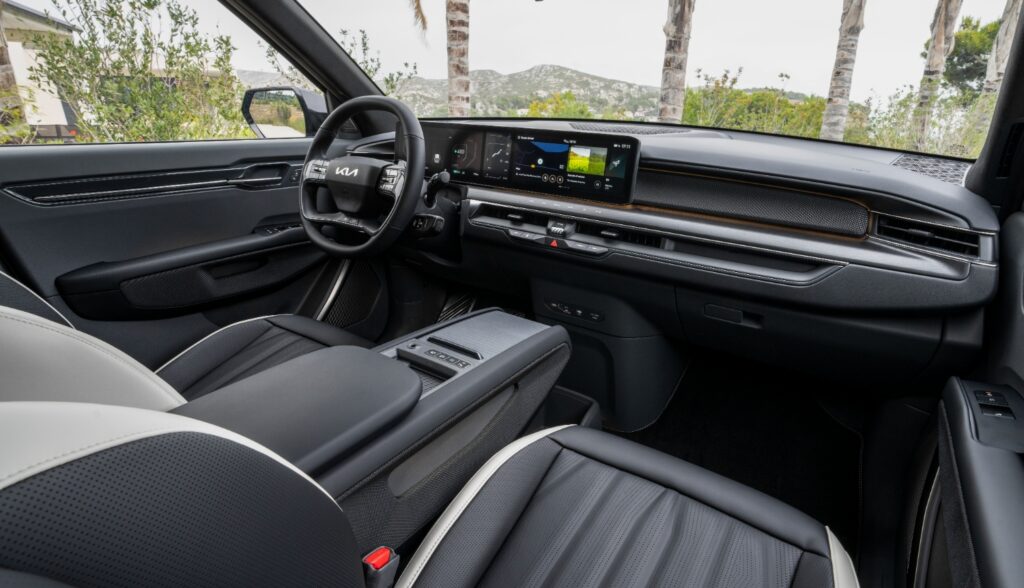
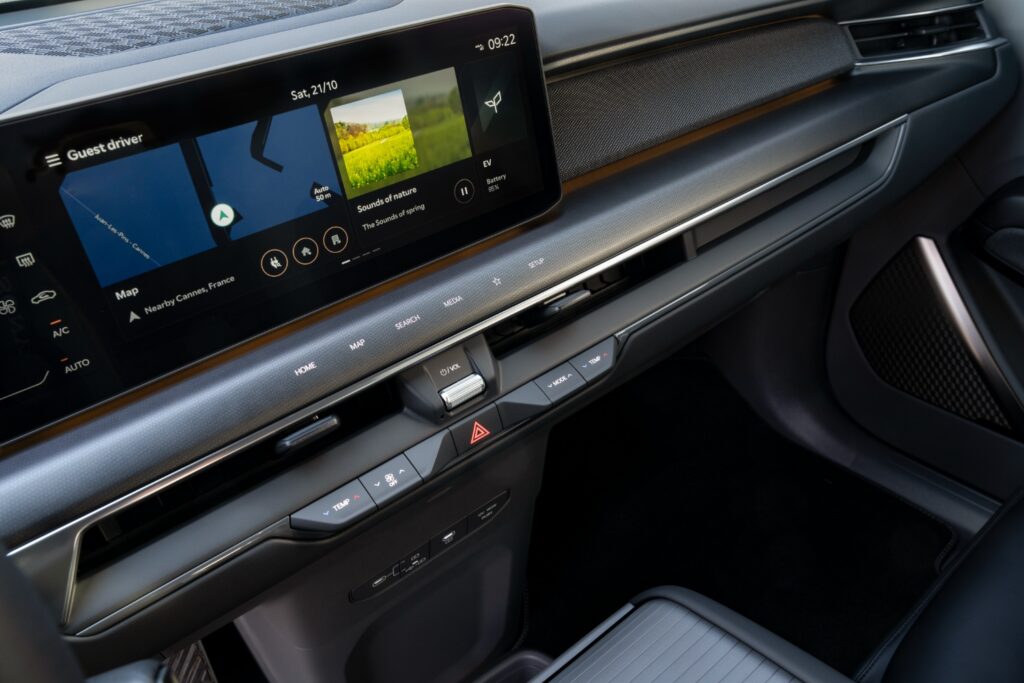
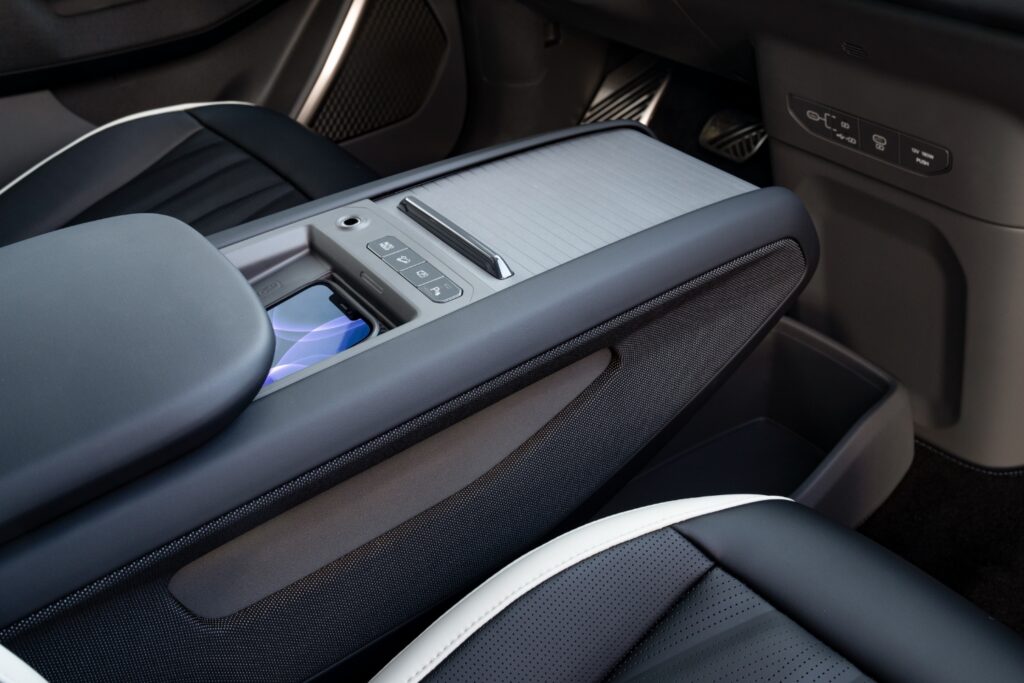

On the road, considering both the dimensions and the two and a half tons of weight, the EV9 surprises in a positive way. The positioning of the battery between the axles benefits the center of gravity and weight distribution, which optimizes stability. Kia did not install any type of adaptive damping, so the suspension’s ability is more impressive, which is independent both at the front and rear. The controlled body movements in curves and sudden changes of direction confirm this. Thus, more agility and precision. At the same time, the filtering capacity of road irregularities should be praised, as it improves ride comfort by reducing noise and vibrations.
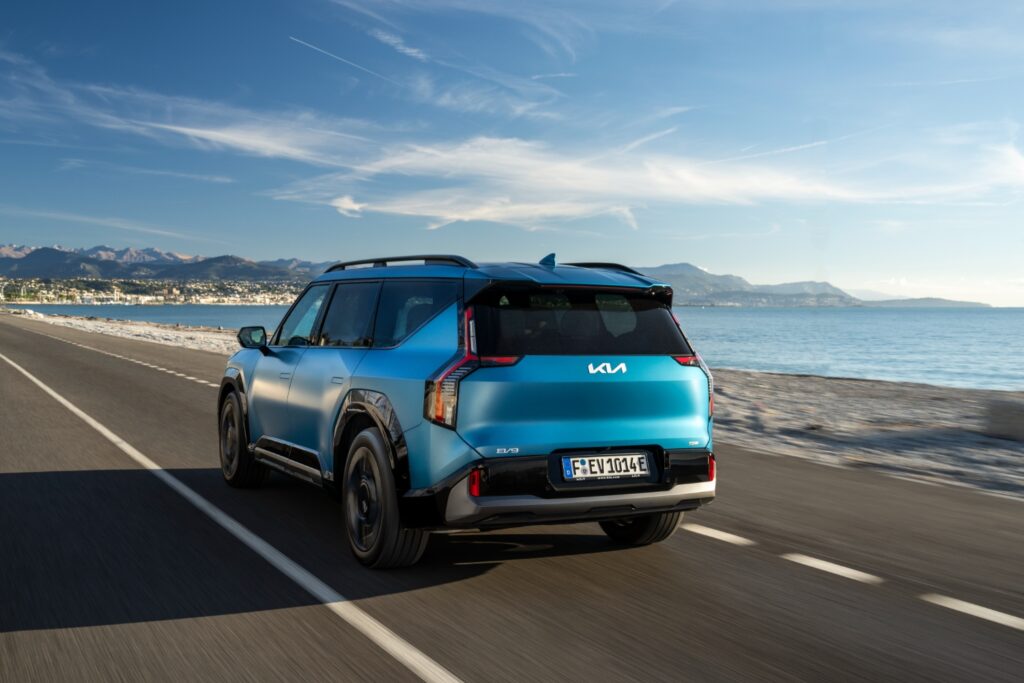
In the first contact with the EV9, we only drove the rear-wheel drive version. The SUV moves with remarkable speed and is responsive to the accelerator, thanks to the instant availability of maximum torque. The electric motor also operates during deceleration and braking, activating energy recovery, a system that simultaneously reduces the speed of the car. The Kia, in the RWD version, has three driving modes: Comfort, Eco, and Sport. Two more notes: correct ergonomics and elevated driving position.












